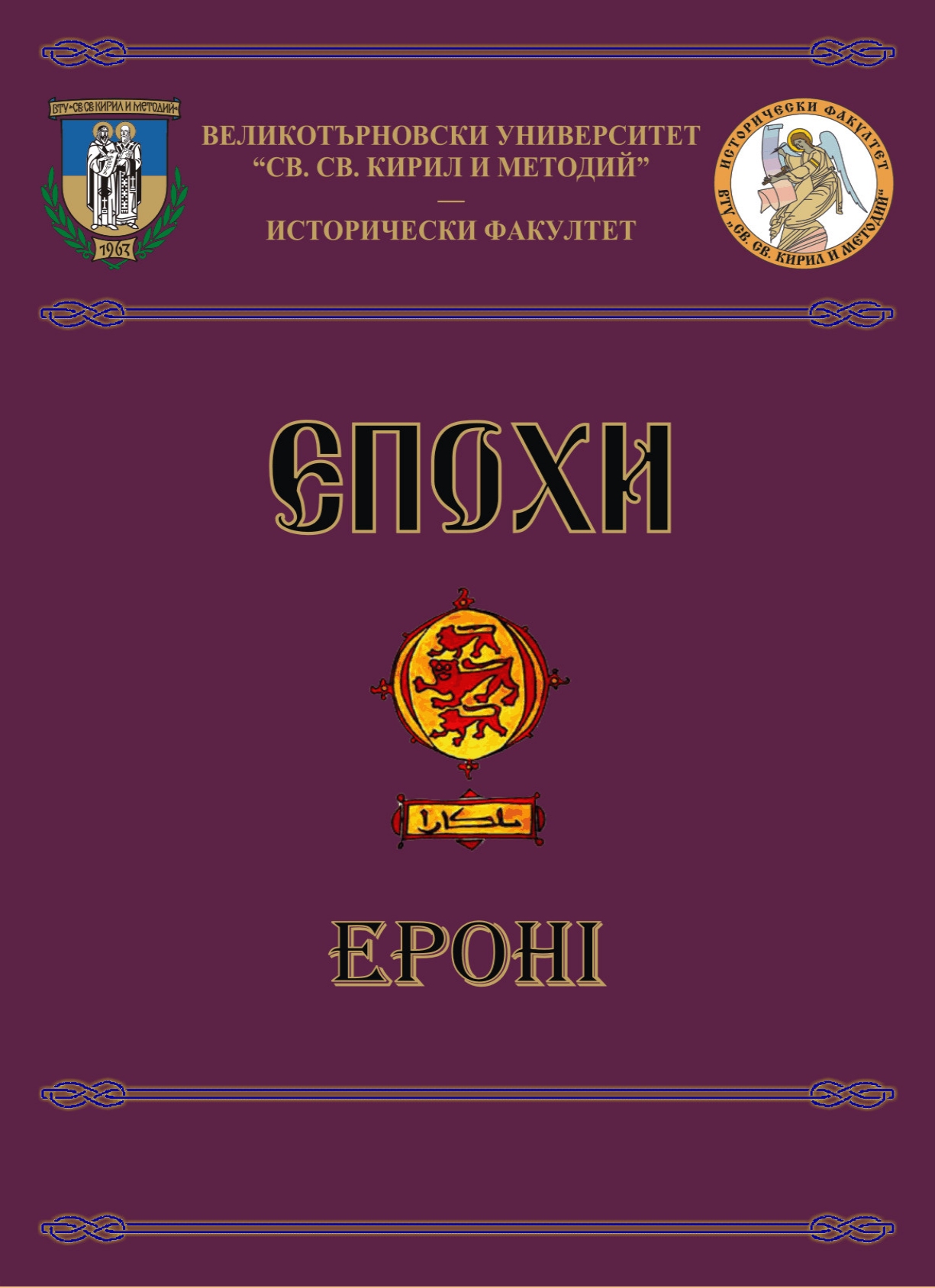
We kindly inform you that, as long as the subject affiliation of our 300.000+ articles is in progress, you might get unsufficient or no results on your third level or second level search. In this case, please broaden your search criteria.


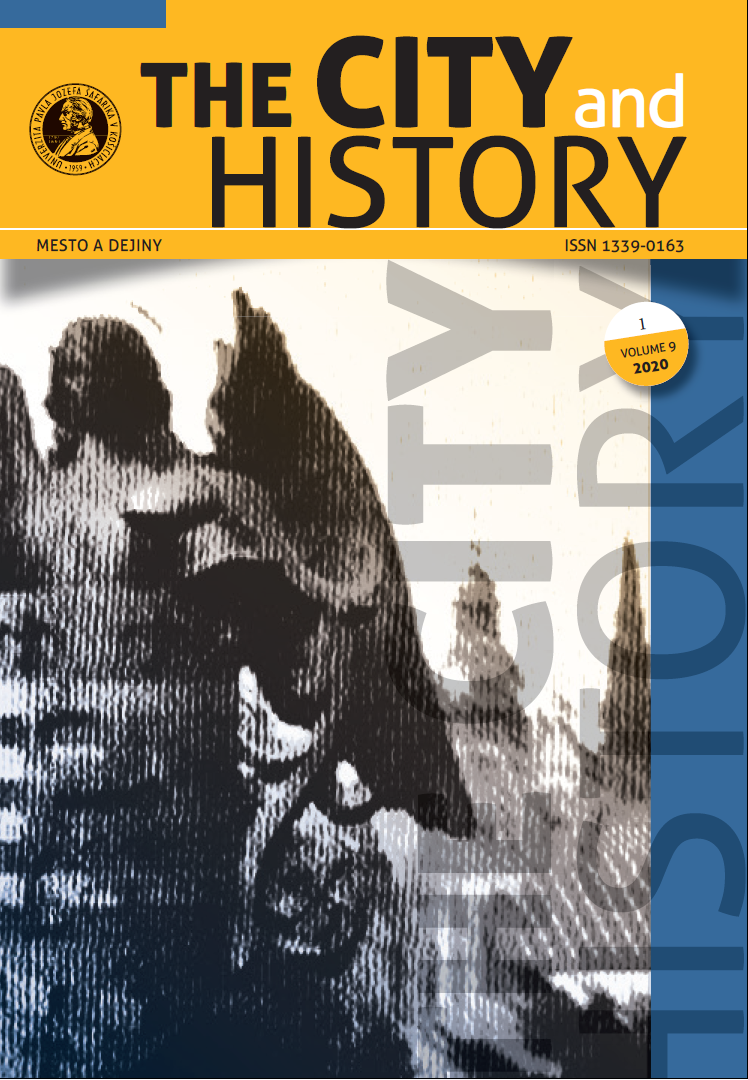
The main aim of this article is to present a comparative historical analysis of the mechanisms for the replacement of the political elites after the collapse of interwar Czechoslovakia and the declaration of the Slovak State under the influence of Nazi Germany in the years 1938–1940 at the level of municipal self-government with regard to the onset of an authoritarian regime. The subjects of the research are two towns, Prešov and Nitra, which provide an opportunity to look for similarities and differences in the changes implemented in two socio-economically and demographically similar towns with different political climates. The research is based on primary and secondary historical sources confronted mainly with the theories of V. Pareto, R. Michels and J. J. Linz. Historical developments in Slovakia in the years 1938–1940 and the process of the replacement of municipal elites correlates with the framework formulated in the sociological theories of Pareto and Michels. The process of the replacement of municipal elites contributed also to the gaining of characteristic elements of the authoritarian regime in the sense of the definition of J. J. Linz established in Slovakia by the Hlinka Slovak People’s Party.
More...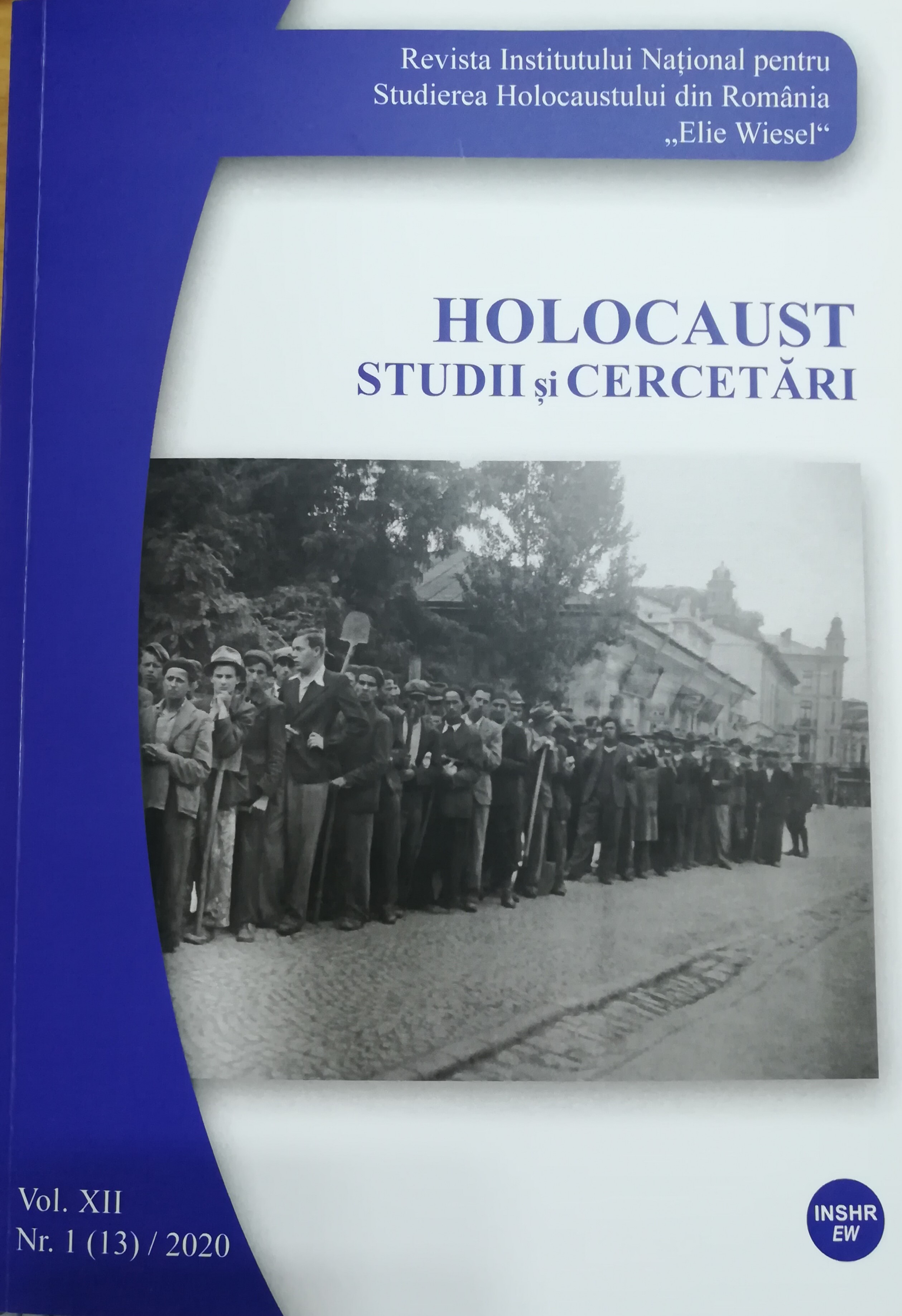
Although the war and the Holocaust struck men and women equally, there are reasons to discuss the fate of the women and their specific problems, in order to fill in a missing linkin describing Jewish life and to offer a fresh perspective that would give us better tools to write the history of Jewish life at that time.This paper will discuss the Romanian Jewish Women’s activity during the Holocaust and will particularly look into the activity of “The Jewish Center for the Protection of Mother and Child”, founded in Bucharest by Mela Iancu. What was the center’s contribution to the Jewish children and mothers during the war in Romania and to the orphans rescued from Transnistria? What can be learned about the women’s role during periods of crisis and war? “Mama Mela”, as the children of the center used to call her, was a symbol of determination,inspiration, wisdom, and hope. Finally, by including her story in the historical discourse, this paper aspires to shape and contribute to the large framework designing a reviewed historical approach and a gender-sensitive agenda.
More...
In this article, I examine the People’s Tribunals and the relevant debates surrounding them. I focus in particular on the symbolic role of these special trials in the Romanian public imagination after 1989, as well as the ways in which scholars can better fit them into existing historiographical patterns. Concepts such as “political justice” or “transition” will also be further explored. Also, I analyze the way in which the Soviet influence in these post-war trials has been perceived, while also looking at the multiple ways in which it can be interpreted. I then show that the study of the Holocaust in Romania is contingent upon understanding these crucial post-war attempts to deal with the horrors of Romania’s past. With all their issues, the People’s Tribunals were crucial in condemning war criminals who perpetrated the genocide of Jews and Roma in Romania. Their unique character must be drawn into relief as they were based on special laws, as ordinary courts did not have the capacity to deal with the unprecedented nature of the crimes that took place during World War II. In this sense, seeing these legal proceedings within the larger European context of dealing with Nazi crimes is of the utmost importance.
More...
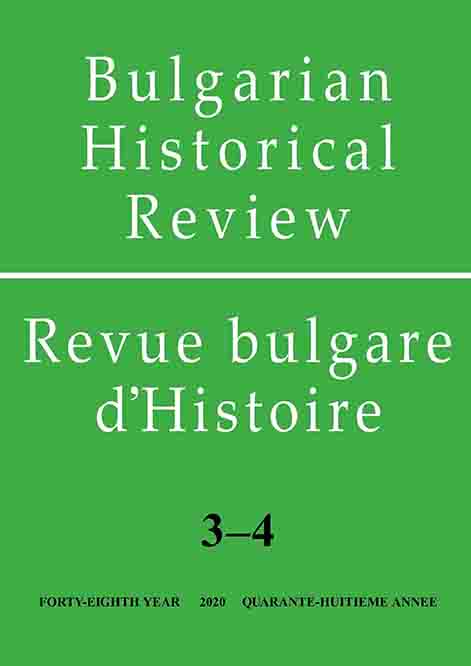
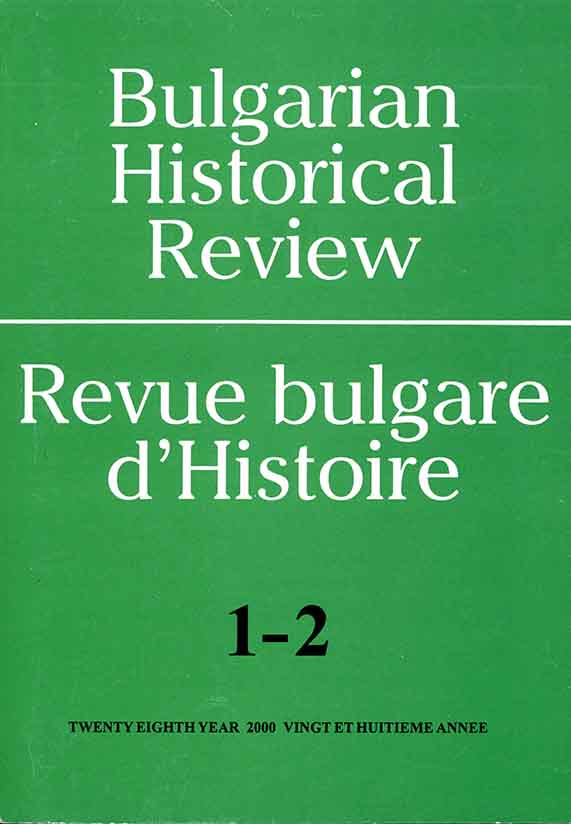
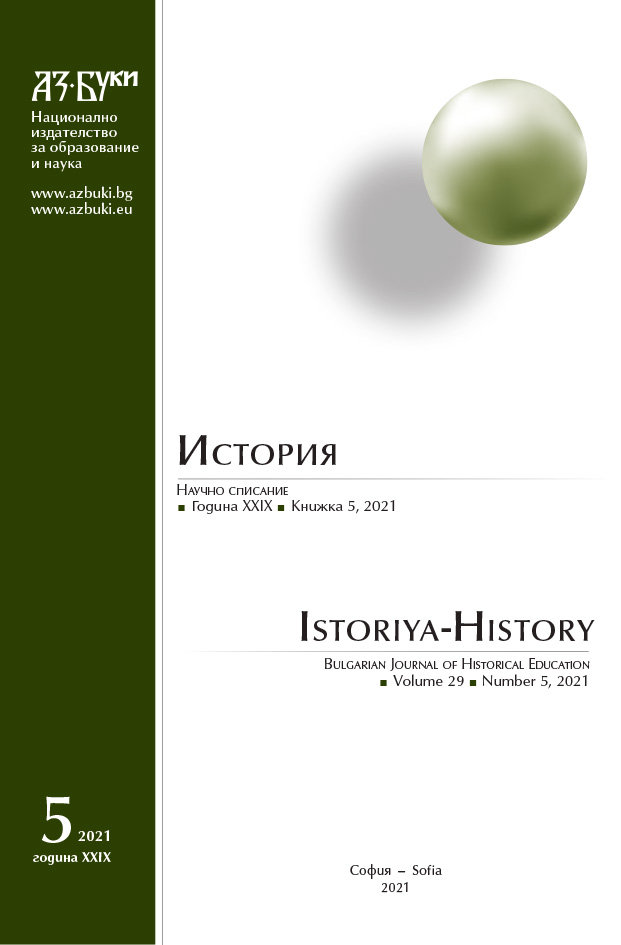
In the proposed military history study with a focus on the historical review of the preparation of officers from the reserve of the Armed Forces of Bulgaria, an attempt is executed to study the basic form of training of this specific type of servicemen in the defined period. The article gradually examines the gradual restoration of the Reserve Officers' School under the still valid Neuilly Treaty clauses and its functional development until the end of the World War II. The subject of the scientific work is related to the systematization of the relationship between the restoration of the training system for reserve officers, the revival of its traditions and the innovations of its development, the goals of the Ministry of War and the approaching World War II with its inherent requirements in military affairs. The researched problematic, included in the scientific production, is based on the analysis and summary of historical sources in the form of more than twenty archival units, mainly from the school’s fund, extracted from the State Military Historical Archive of our country.
More...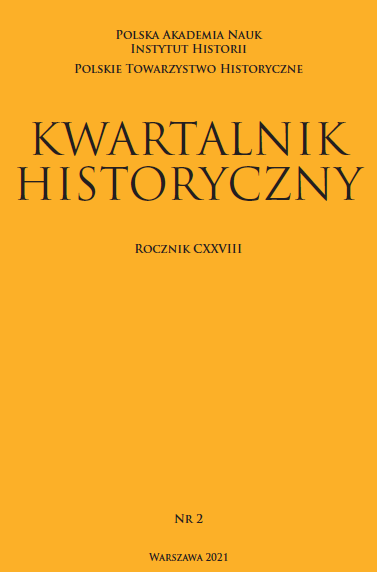
Review of: Tomasz Pudłocki - Prawda historyczna a odpowiedzialność prawna za jej zniekształcanie, red. nauk. Arkadiusz Radwan, Marcin Berent, Warszawa 2019, Wydawnictwo C.H. Beck, ss. XL + 470
More...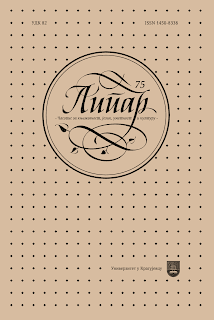
Uglješa Šajtinac zeigt im Drama Das Banat (2007) das proble- matische Zusammenleben von Donauschwaben (Joseph, Erwin und Magdalena Wolf) und Serben (Dobrivoje, Đuđa, Svetislav) im Banat während des Zweiten Weltkrieges. Im Kontext von historischen Umwälzungen und politischen Konflikten versuchen die Figuren im Drama entweder die alte kollektive Identität zu bewahren oder eine neue zu bilden, und ihre Kohäsion mithilfe verschiedener Kategorien festzulegen: Geschlechts (Geschlechtsidentität), Territoriums (territoriale Identität), Klasse (ge- sellschaftsökonomische Identität), Religion (religiöse Identität), Nation (nationale Identität), sowie Politik (politische Identität) und Kultur (kulturelle Identität). Aus- gehend von der Theorie des britischen Historikers der Soziologie Anthony D. Smith (1939–2016), eines der Begründer der Nationalismusforschung, werden in diesem Aufsatz im Kontext des Chronotopos des besetzten Banats (1941–1945) unter- schiedliche Manifestationen der kollektiven Identität untersucht, mit dem Ziel, die Kohäsionskraft dieser Kategorien aufzuklären. Ergebnisse der Analyse zeigen dass Geschlecht, Territorium, Klasse und Nation nicht einen genügend starken Grad der Kohäsion aufzeigen und die Figuren, die auf diesen Kategorien ihre Identität auf- gebaut haben, könnten sich in den neuen Zeiten nicht erhalten, im Unterschied zu denen, die sich für Politik und Kultur entschieden haben, die die Grenzen der Zeit und des Raums überschreiten und eine stärkere Verbindung unter den Figuren her- stellen. So können Dobrivoje und seine Schwester als Kommunisten im neuen Staat fortleben, während andere Figuren sterben oder das Banat verlassen müssen, um eine neue Heimat in der Weite auszusuchen, in der die kulturellen Elemente wie Kunst (Film und Musik) und Fremdsprachen die Verbindung unter den Menschen sichern, trotz den ethnischen und anderen Unterschieden.
More...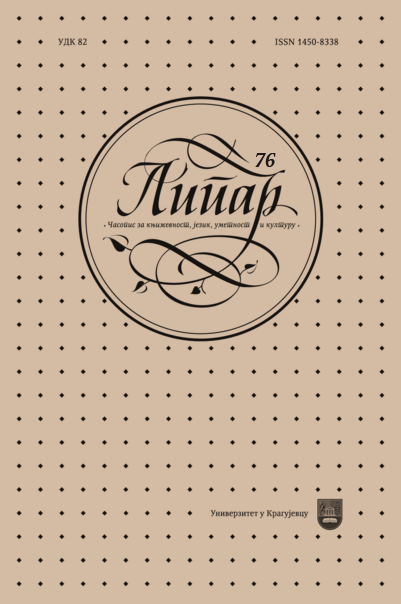
Traumatic experience such as the Holocaust requires traumatic ways of representation. Those who dare to write about it encounter various dilemmas and difficulties in finding the right ways to write about something that cannot be written about. Train trope is a usual symbol of the biggest XX century trauma because rail- way system and different types of cars enabled transportation of millions of people from the whole Europe, whose lives were terminated in the death camps, as well as their wealth, gold and other valuables. Trains found their way in literature with both survivor writers and those who didn’t experience the Holocaust. The symbol of train had been interpreted within psychoanalysis of dreams as passage of time and life before it started to operate as a symbol of the very death in reality. In this paper we tried to investigate how train trope functions in this trauma based literary genre with those writers who were inside and those who felt them as cultural heritage. Those who were inside death trains, such as Elie Wiesel, insisted that the only way of representation has to be in documentary and realistic style. On the other hand, writers who were lucky not to experience the hell on Earth couldn’t write from the ‘inside’ and had to find other ways of representation. Their styles vary from allegory in Kosinsi’s autofictional novel to magic realism in David and Thomas’s novels. Thomas also adds Freudian psychoanalysis while Pinter experiments with stage representation.
More...
Review of: Wojciech Wichert - Ostpreußens Kriegsbeute. Der Regierungsbezirk Zichenau 1939–1945. Hrsg. von Christhardt Henschel. (Einzelveröffentlichungen des Deutschen Historischen Instituts Warschau, Bd. 42.) 416 S., 22 Ill., Kt. ISBN 978-3-944870-75-5. (€ 58,–.)
More...
Review of: Frauke Wetzel - Christian Kuchler: Lernort Auschwitz. Geschichte und Rezeption schulischer Gedenkstättenfahrten 1980–2019. Wallstein. Göttingen 2021. 275 S. ISBN 978-3-8353-3897-5. (€ 26,–.)
More...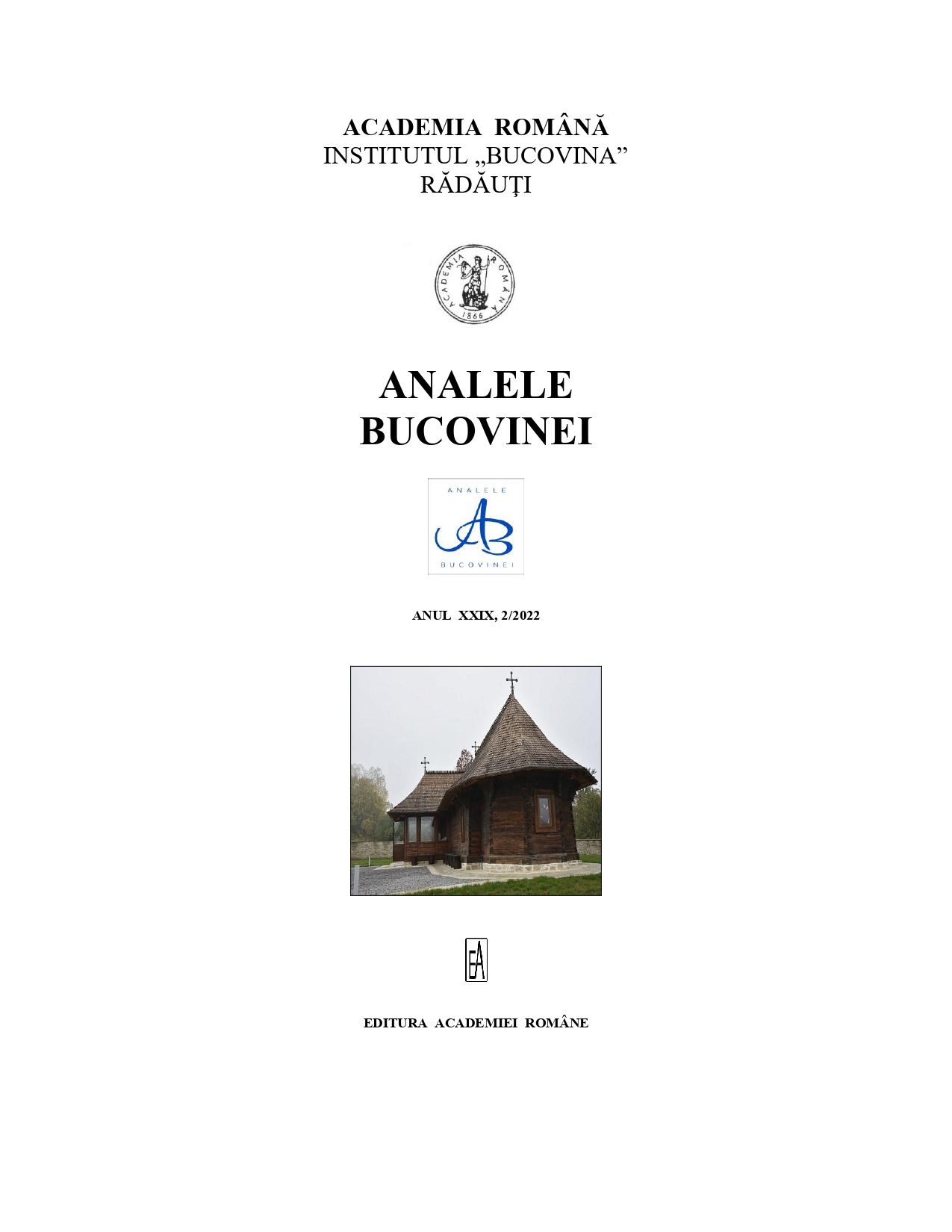
The author considers a set of military propaganda measures taken by Soviet troops to seize the territories of Bessarabia and Northern Bukovina. Regular units of the USSR Armed Forces which were united in a specially created Southern Front, whose troops were concentrated on the border with Romania, were used to achieve this goal.On June 28, 1940, Soviet troops crossed the Dniester and entered Bessarabia and Northern Bukovina. Romanian units were ordered to withdraw in an organized manner. The Red Army exceeded the agreed rate of evacuation of Romanian troops, violated the line of demarcation, which led to local incidents. There were cases of disarmament of Romanian soldiers. There were armed clashes, a result of which were loses of both sides, including killed. In turn, the Red Army also felt hostility, encountering minefields, anti-tank barriers, trenches, mined or dismantled railways and bridges. Both Soviet and Romanian military units took certain military-administrative measures against the civilian population, which had different motives and forms of manifestation. The low level of morale of the retreating Romanian army led to the disintegration of entire military units, whose soldiers dropped their weapons and fled home. At the same time, there were serious violations of military discipline among the Red Army, for which the soldiers were punished, including the death penalty.Immediately after the Red Army entered Bessarabia and the Northern part of Bukovina, a huge Soviet propaganda machine began to operate. A large number of newspapers and special literature were distributed among the population and soldiers; and posters and slogans were hung in the streets and houses. Politicians of the Red Army organized rallies and demonstrations to awaken in the souls of the Bessarabians and Bukovinians “love for the liberators and a sense of confidence in the Soviet authority”. The annexation of Bessarabia and Northern Bukovina by the Soviet Union in June – July, 1940 can be considered a well-thought-out and carefully prepared political-diplomatic and military-propaganda campaign. These territories were occupied by the Red Army according to all the rules of military art (all components of the military operation were used: military force, local military pressure, military intelligence, propaganda and propaganda service), thanks to which the USSR achieved its goal.
More...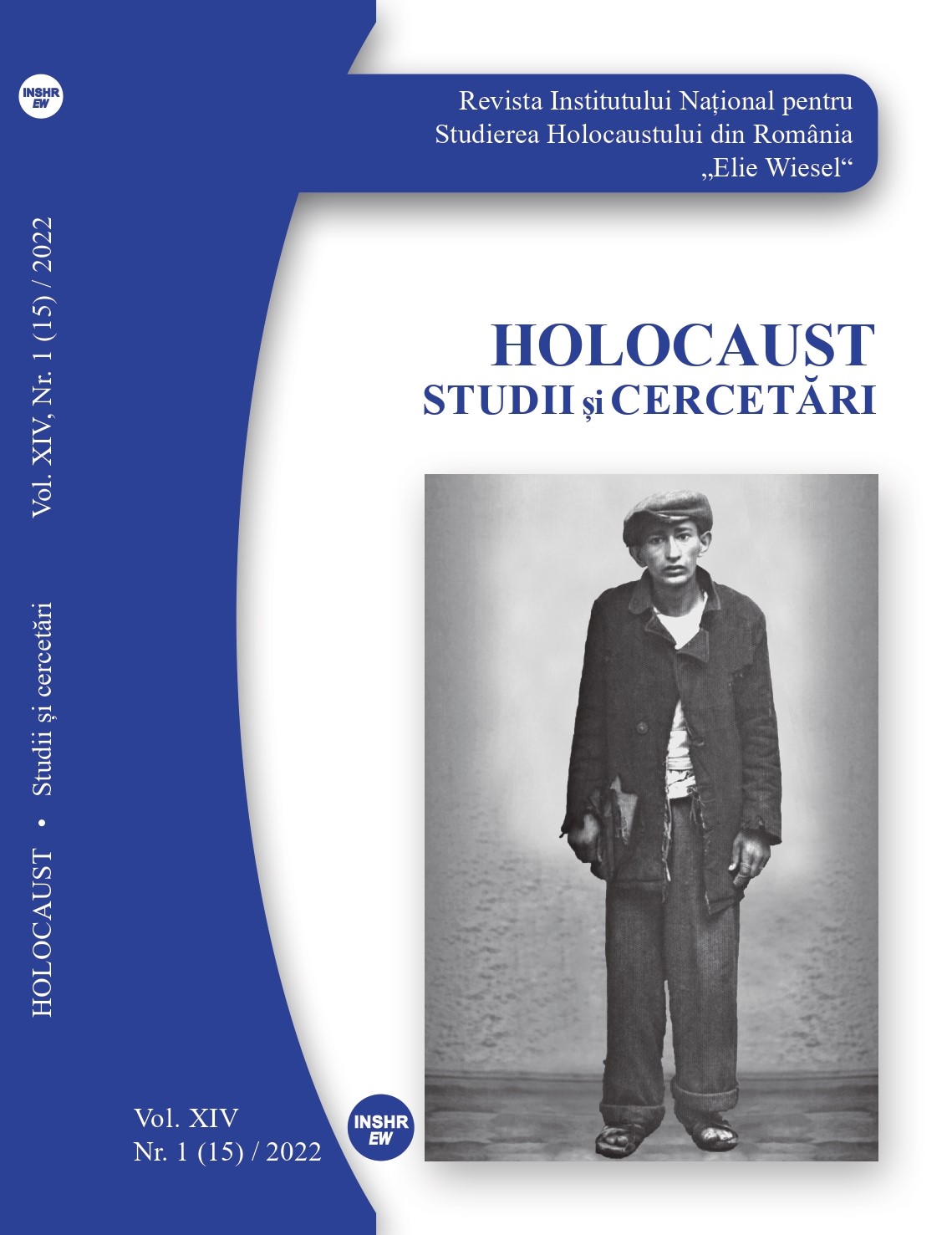
This article focuses on the compensation claims submitted in the summer of 1970 by survivors from Argeș County, Romania. Three categories of claims are analyzed, filed respectively by Roma, Jews, and “political prisoners”. The main question the article asks is to what extent and under which conditions this collection of compensation claims can be used to understand the Holocaust in Romania. As the primary purpose of the claims was to get West German compensation, not to provide historical information (which was presented and filtered accordingly, both by the claimants and by the Romanian authorities), the conclusion is that the collection can only prove useful if seen in this specific context and approached with caution.
More...
In 1922, in Romania, fascist youth organizations began to undertake actions of intimidation and annihilation of Jews and of those accused of supporting them, through the use of physical and verbal violence, manifestations that continued and radicalized year after year. Sports and sports venues were among the spaces where Romanian antisemitism seemed tobe allowed to manifest itself unhindered. The systemic spread of the antisemitic ideology led to an increase of such occurrences. As of the 1930s, the foundations of the anti-Jewish legislation continued by the Antonescu regime were laid, and the war of the far-right groups against Jews and Judaism was total and concerned all aspects of life, including sports. Step by step, athletes and officials of Jewish origin were excluded from this field, meaning that the Maccabi association, as well as other Jewish sport teams, were banned from all official competitions of the Romanian State. this situation lasted four years, until the end of the Antonescu regime. Jewish associations were categorized by the police and military authorities as a cover for communist activity. In Romania, just like in other countries, persecution and discrimination of Jews continued after the end of World War II, given that stadiums in Bucharest and in the province witnessed reprehensible deeds against Jewish soccer players and sports clubs, done by the other athletes and especially by the audiences. In this article, I will present several such cases in detail, in order to show a lesser known side of Romanian antisemitism before and after the Second World War.
More...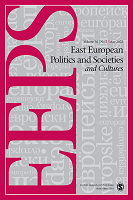
This article examines the life story of Felicia Carmelly, a Holocaust survivor from southern Bukovina, and follows her geographic and demographic journey from Dorna to the deadly camps of Transnistria, to postwar Romania and Israel, and finally to contemporary Canada. By close reading of her two oral interviews and her later memoirs, it reconstructs a particular biography shaped by the violent uprooting of Felicia and her family from the places she called home and discusses multiple shifts in her identity and a changing sense of belonging. Her life offers us a window into the broader questions about Jewish survivors and migrants after World War II, the inherent contradictions surrounding the evolution of modern Jewish identities, and the (non)negotiable boundaries of individuals in various circumstances.
More...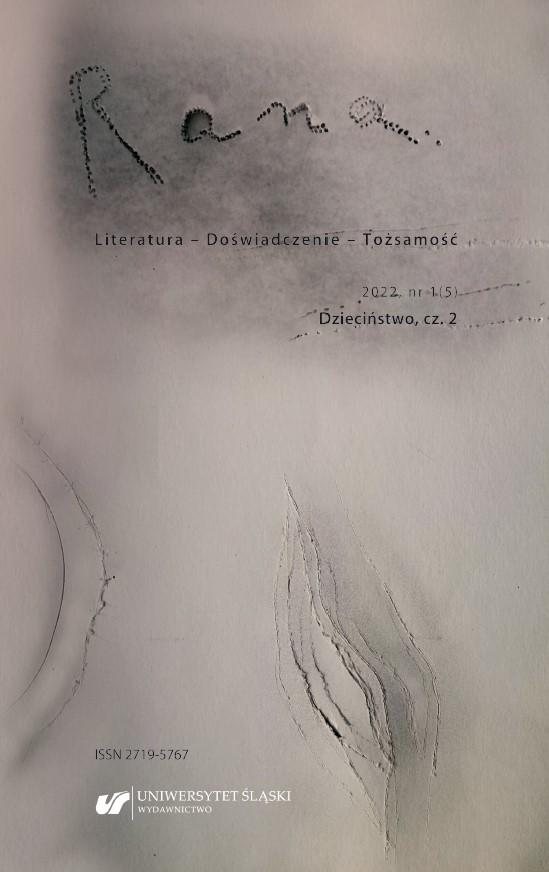
The article offers an analysis of Svetlana Alexievich’s Last Witnesses: An Oral History of the Children of World War II as a history of war from a child’s perspective. Giving the voice to those whose childhood fell on wartime and occupation is a step towards discovering children’s wartime experience as well as a gesture against its ideologisation and politicisation. The protagonists’ memories assembled in the reportage allow us to recreate the children’s point of view about the aforementioned events, which usually remains omitted from the official historical discourse shaped in the USSR.
More...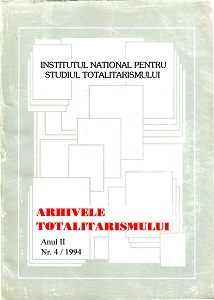
Reviews of: 1. Francis Fukuyama, Sfârșitul istoriei și ultimul om, traducere de Mihaela Eftimiu, Editura Paideia, București, 1994. 2. Ștefan Bellu, Pădurea răzvrătită - Mărturii ale rezistenței anticomuniste, Editura Gutinul, Baia Mare, 1993. 3. Alexandr Zinoviev, Homo Sovieticus, traducere de Andi Ștefănescu, Editura Dacia, Cluj-Napoca, 1991. 4. Alain Besançon, Anatomia unui spectru. Economia politică a socialismului real, traducere de Mona Antohi și Sorin Antohi , Editura Humanitas, București, 1992 . 5. Ghiță lonescu, Investigarea comparativă a politicii comuniste, traducere de Radu Paraschivescu, Editura Humanitas, București, 1992. 6. Ghiță lonescu și Isabel de Madariaga, Opoziția. Trecutul și prezentul unei instituții politice, traducere de Valeriu Mihăilă, Editura Humanitas, București, 1992. 7. Alain Besançon, Originile intelectuale ale leninismului, traducere de Lucreția Văcar, Editura Humanitas, București, 1993. 8. Zbigniew Brzezinski, Marele eșec. Nașterea și moartea comunismului în secolul douăzeci, traducere de Marius Jucan, Editura Dacia, Cluj-Napoca, 1993. 9. Friedrich Hayek, Drumul către servitute, traducere de Eugen B. Marian, Editura Humanitas, București, 1993. 10. Karl Raimund Popper, Societatea deschisă și dușmanii ei. vol. I Vraja lui Platon, vol. II Epoca marilor profeții: Hegel și Marx, traducere de Dragan Stoianovici, Editura Humanitas, București, 1993. 11. Françoise Thom, Limba de lemn, traducere de Mona Antohi, Editura Humanitas, București, 1993. 12. Hannah Arendt, Originile totalitarismului, traducere de Ion Dur și Mircea Ivănescu, Editura Humanitas, București, 1994. 13. François Châtelet și Éveline Pisier, Concepțiile politice ale secolului XX, traducere de Mircea Boari și Cristian Preda, Editura Humanitas, București, 1994. 14. Virgil Ierunca, Fenomenul Pitești, Editura Humanitas, București, 1991. 15. Ion Ioanid, închisoarea noastră cea de toate zilele, vol. l, 1949, 1952-1954, Editura Albatros, București, 1991. 16. Nicolae Mărgineanul, Amfiteatre și închisori (Mărturii asupra unui veac zbuciumat), Ediție îngrijită și studiu introductiv de Voicu Lăscuș, Editura Dacia, Cluj-Napoca, 1991. 17. Oana Orlea, ia-ți boarfele și mișcă, Interviu realizat de Mariana Marin, în Franța - iulie 1990, Editura Cartea Românească, București, 1991. 18. Marcel Petrișor, Memorii, I, Fortul 13. Convorbiri din detenție, Editura Meridiane, București, 1991. 19. N. Steinhardt, Jurnalul fericirii, Notă asupra ediției și Postfață de Virgil Ciomoș, Editura Dacia, Cluj-Napoca, 1991. 20. Andrei Șerbulescu. The Dialectic Law Monarchy. The Second Version of Zither's Memoirs, Humanitas, București, 1991. 21. închisoarea din Sighet acuză, Omagiu de Prof. dr. Valeriu Achim, Editura Gutinul, Baia Mare, 1991. 22. Constantin Cesianu, Salvat din infern, traducere din limba franceză de Maria Alexe, Editura Humanitas, București, 1992. 23. Nistor Chioreanu, Morminte vii, Ediție îngrijită, Prefață și Note de Marius Cristian, Institutul European lași, lași,1992. 24. Andrei Ciurunga, Memorii optimiste. Evocări și versuri din închisori, editura Fundației Culturale Române, București, 1992. 25. Lena Constante, Evadarea tăcută. 3000 de zile singură în închisorile din România, în versiunea românească a autoarei, Editura Humanitas, București, 1992.
More...